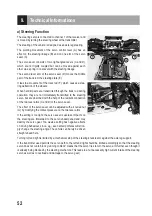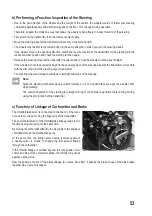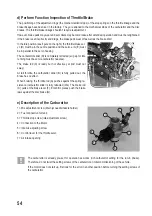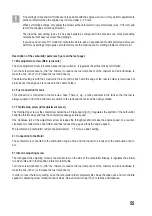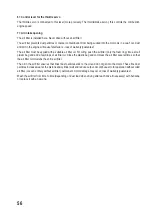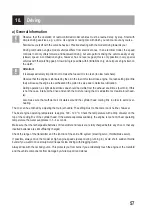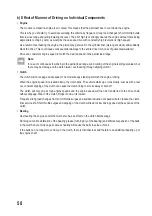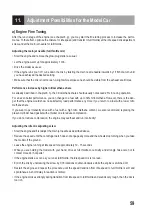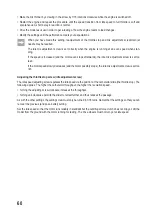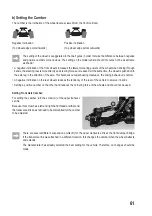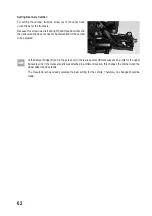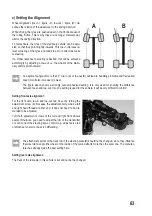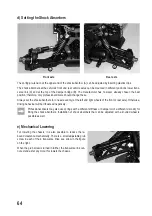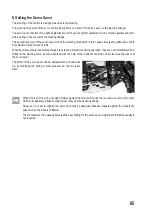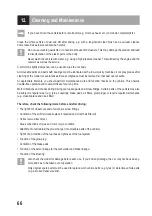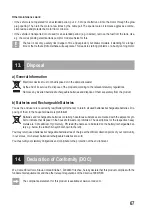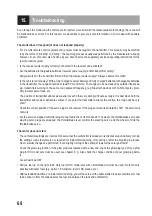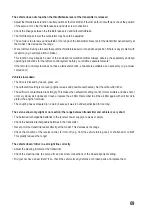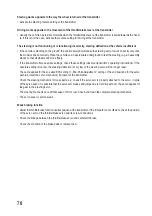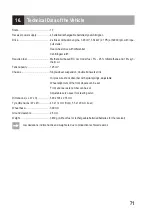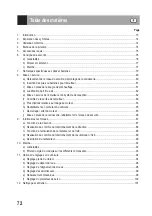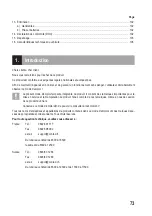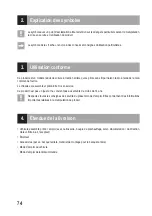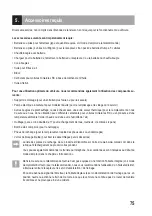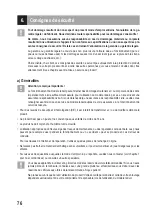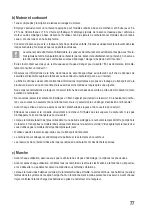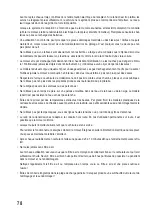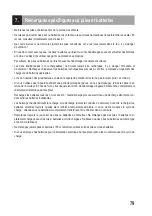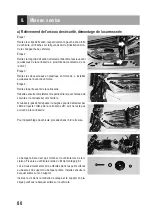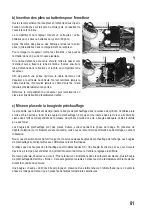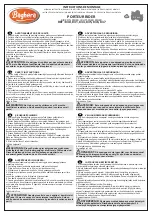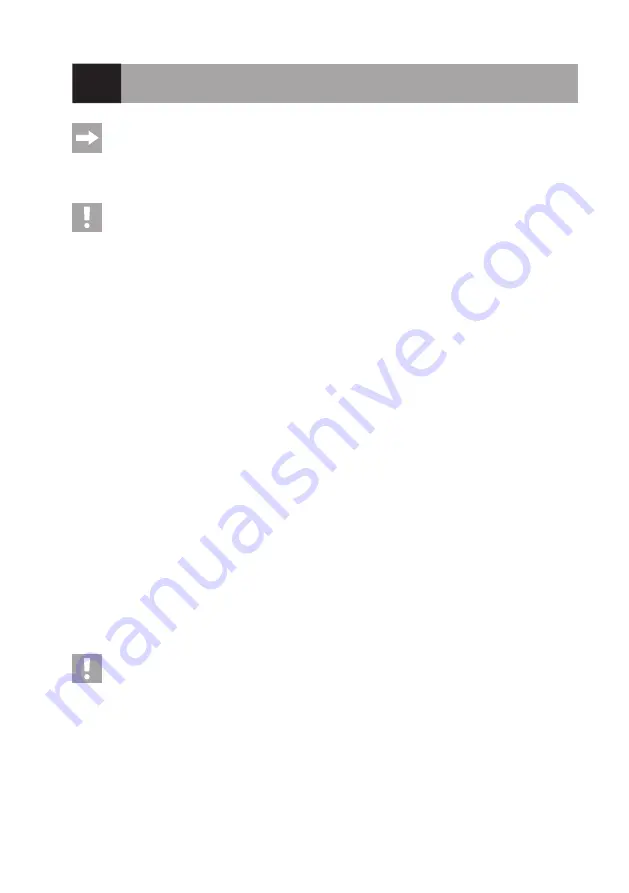
66
12. Cleaning and Maintenance
If you have driven the vehicle before, let all parts (e.g. motor, exhaust, etc.) cool down completely first.
Clean the whole vehicle of dust and dirt after driving, e.g. with a long-haired clean brush and a vacuum cleaner.
Compressed air aerosols can also be helpful.
Do not use cleaning aerosols or conventional household cleaners. This may damage the product and lead
to discolouration of the plastic parts or the body.
Never wash the vehicle with water, e.g. using a high-pressure cleaner. This will destroy the engine and the
receiver as well as the servos.
A soft cloth, slightly dampened, can be used to wipe the car body.
All moveable parts and parts with bearings must be lubricated with a low viscosity machine oil or spray grease after
cleaning of the model or several drives. Excess oil/grease must be removed so that dust cannot settle.
At appropriate intervals, you should perform maintenance work and function checks on the vehicle. This ensures
trouble-free operation and road-worthiness for a long time.
Motor vibrations and shocks during driving can loosen parts and screw fittings. Certain parts of the vehicle may also
be subject to regular wear (e.g. tyres, couplings, brake pads, air filters, glow plugs) or require regular maintenance
(e.g. clean/replace and oil air filter).
Therefore, check the following items before and after driving:
• The tight fit of wheel nuts and of all vehicle screw fittings
• Condition of the air filter (clean/replace if required and oil with air filter oil)
• Correct servo attachment
• Glue-connections of tyres and rums or tyre condition
• Attachment of all cables (they must not get into movable parts of the vehicle)
• Tight fit and condition of the fuel hoses, tightness of the fuel system
• Function of the glow plug
• Condition of the brake pads
• Function of the servo linkage for the carburettor and brake linkage.
• Function of the steering
Also check the model for damage before each use. If you find any damage, the car may not be used any
-
more and has to be taken out of operation.
Only original spare parts must be used to replace worn vehicle parts (e.g. tyres) or defective vehicle parts
(e.g. a broken transverse link).
Summary of Contents for 490150
Page 142: ...142 ...
Page 143: ...143 ...

